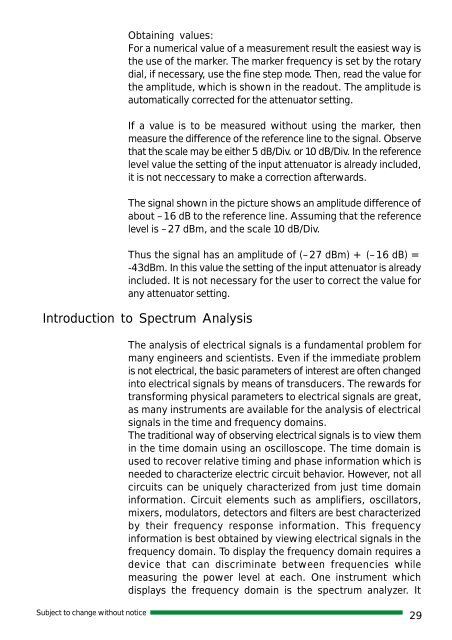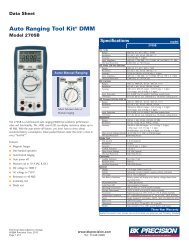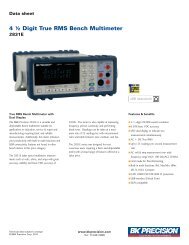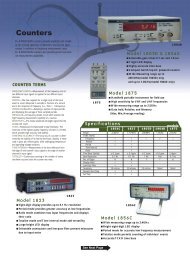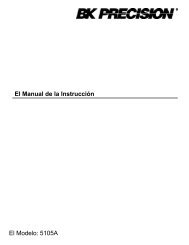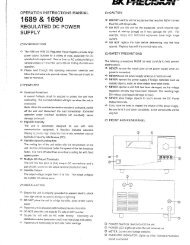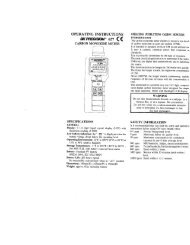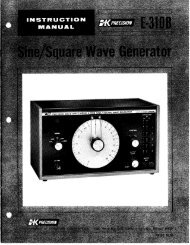2635 manual - BK Precision
2635 manual - BK Precision
2635 manual - BK Precision
You also want an ePaper? Increase the reach of your titles
YUMPU automatically turns print PDFs into web optimized ePapers that Google loves.
Obtaining values:<br />
For a numerical value of a measurement result the easiest way is<br />
the use of the marker. The marker frequency is set by the rotary<br />
dial, if necessary, use the fine step mode. Then, read the value for<br />
the amplitude, which is shown in the readout. The amplitude is<br />
automatically corrected for the attenuator setting.<br />
If a value is to be measured without using the marker, then<br />
measure the difference of the reference line to the signal. Observe<br />
that the scale may be either 5 dB/Div. or 10 dB/Div. In the reference<br />
level value the setting of the input attenuator is already included,<br />
it is not neccessary to make a correction afterwards.<br />
The signal shown in the picture shows an amplitude difference of<br />
about –16 dB to the reference line. Assuming that the reference<br />
level is –27 dBm, and the scale 10 dB/Div.<br />
Thus the signal has an amplitude of (–27 dBm) + (–16 dB) =<br />
-43dBm. In this value the setting of the input attenuator is already<br />
included. It is not necessary for the user to correct the value for<br />
any attenuator setting.<br />
Introduction to Spectrum Analysis<br />
The analysis of electrical signals is a fundamental problem for<br />
many engineers and scientists. Even if the immediate problem<br />
is not electrical, the basic parameters of interest are often changed<br />
into electrical signals by means of transducers. The rewards for<br />
transforming physical parameters to electrical signals are great,<br />
as many instruments are available for the analysis of electrical<br />
signals in the time and frequency domains.<br />
The traditional way of observing electrical signals is to view them<br />
in the time domain using an oscilloscope. The time domain is<br />
used to recover relative timing and phase information which is<br />
needed to characterize electric circuit behavior. However, not all<br />
circuits can be uniquely characterized from just time domain<br />
information. Circuit elements such as amplifiers, oscillators,<br />
mixers, modulators, detectors and filters are best characterized<br />
by their frequency response information. This frequency<br />
information is best obtained by viewing electrical signals in the<br />
frequency domain. To display the frequency domain requires a<br />
device that can discriminate between frequencies while<br />
measuring the power level at each. One instrument which<br />
displays the frequency domain is the spectrum analyzer. It<br />
Subject to change without notice<br />
29


